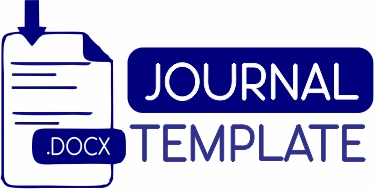PENINGKATAN KEMAMPUAN PEMECAHAN MASALAH PESERTA DIDIK MELALUI MODEL PROBLEM BASED LEARNING DENGAN PENDEKATAN TEACHING AT THE RIGHT LEVEL
DOI:
https://doi.org/10.24269/ed.v7i2.2402Keywords:
Problem Solving abilities, Problem Based Learning, Teaching at the Right LevelAbstract
pembelajaran menggunakan model Problem Based Learning dengan pendekatan Teaching at the Right Level di kelas VII-I SMP Negeri 1 Bangil semester ganjil tahun ajaran 2023/2024. Penelitian ini merupakan penelitian tindakan kelas yang dilaksanakan dalam dua siklus. Metode pengumpulan data menggunakan tes pra siklus dan posttes. Pengukuran kemampuan pemahaman masalah menggunakan indikator yang dimiliki oleh Pólya (1973) dimana terdapat peningkatan sebesar 0,1 pada indikator pertama pemecahan masalah dari 2,7 pada siklus 1 menjadi 2,8 pada siklus 2; peningkatan sebesar 0,4 pada indikator kedua dari 2,5 pada siklus 1 menjadi 2,9 pada siklus 2; peningkatan sebesar 0,4 pada indikator ketiga dari 2,2 pada siklus 1 menjadi 2,6 pada siklus 2; peningkatan sebesar 0,4 pada indikator keempat dari 1,1 pada siklus 1 menjadi 1,4 pada siklus 2. Pembelajaran menggunakan model Problem Based Learning dengan Pendekatan Teaching at the Right Level juga dapat meningkatkan hasil belajar peserta didik ditunjukkan dengan adanya peningkatan persentase ketuntasan klasikal sebesar 23% dari 53% pada siklus 1 menjadi 75% pada siklus 2. Penelitian ini dapat disimpulkan bahwa model Problem Based Learning dengan Pendekatan Teaching at the Right Level ini dapat meningkatkan kemampuan pemecahan masalah peserta didikReferences
Abdul Latif Jameel Poverty Action Lab (J-PAL). (2018). Teaching at the Right Level to improve learning. J-PAL Evidence to Policy Case Study.
Arico, V. D., & Wahyudi, W. (2021). Pelevelan Kemampuan Pemecahan Masalah Matematis Berdasarkan Taksonomi Solo. JISIP (Jurnal Ilmu Sosial dan Pendidikan), 5(1).
Arikunto, S. (2018). Dasar-dasar evaluasi pendidikan (Ed. 3. cet. 1.). Bumi Aksara.
Asyhari, A., & Sifa’i, M. (2021). Problem-Based Learning to Improve Problem-Solving Skill: Is it Effective Enough? Indonesian Journal of Science and Mathematics Education, 4(1), 78–88.
Depdikbud. (2014). Peraturan Menteri Pendidikan dan Kebudayaan Nomor 104 Pedoman Penilaian Hasil Belajar oleh Pendidik. Kemendikbud.
Hidayati, R. M., & Wagiran, W. (2020). Implementation of problem-based learning to improve problem-solving skills in vocational high school. Jurnal Pendidikan Vokasi, 10(2).
Jauhari, T., Rosyidi, A. H., & Sunarlijah, A. (2023). Pembelajaran Dengan Pendekatan Tarl Untuk Meningkatkan Minat Dan Hasil Belajar Matematika Peserta Didik. Ptk Dan Pendidikan, 9(1), 59–74.
Kemmis, S., McTaggart, R., & Nixon, R. (2014). The Action Research Planner: Doing Critical Participatory Action Research. Springer Singapore.
Krulik, S., & Rudnick, J. A. (1988). Problem solving: A handbook for elementary school teachers. Allyn and Bacon.
National Council of Teachers of Mathematics (NCTM). (2000). Principles and Standards for School Mathematics. Principles and Standards for School Mathematics. Principles and Standards for School Mathematics, 1906 Association Drive Reston, VA 20191-1502.
Nurhasanah, A., Soro, S., & Dwi Siswanto, R. (2021). Upaya Meningkatkan Hasil Belajar Matematika pada Sistem Persamaan Linear Tiga Variabel (SPLTV) dan Pertidaksamaan Dua Variabel melalui Model Visualization Auditory and Kinesthetic (VAK). Jurnal Pendidikan Matematika dan Sains, 9(1), 63–68.
Partnership for 21st Century Learning (P21). (t.t.). Partnership for 21st Century Learning. Framework for 21st Century Learning. Partnership for 21st Century Skills - Core Content Integration, One Massachusetts Avenue NW, Suite 700.
Pólya, G. (1973). How to solve it: A new aspect of mathematical method (2. ed). Princeton University Press.
Rosid, M. A., & Listyani, E. (2020). Kemampuan Awal Pemecahan Masalah SPLDV Siswa SMP. Jurnal Pendidikan Matematika dan Sains, 1–13.
Schmidt, H. G., Rotgans, J. I., & Yew, E. H. (2011). The process of problem-based learning: What works and why: What works and why in problem-based learning. Medical Education, 45(8), 792–806. x
Sugito, S. (2021). Pengenalan Ice Breaking Dalam Meningkatkan Semangat Belajar Siswa. Jurnal Bahasa Indonesia Prima (BIP), 3(2), 1–6.
Suharyani, S., Suarti, N. K. A., & Astuti, F. H. (2023). Implementasi Pendekatan Teaching At The Right Level (Tarl) Dalam Meningkatkan Kemampuan Literasi Numerasi Anak Di SD IT Ash-Shiddiqin. Jurnal Teknologi Pendidikan : Jurnal Penelitian dan Pengembangan Pembelajaran, 8(2), 470.
Yuniar Ranasiwi Seco, V., & Cendana, W. (2022). Penerapan Refleksi Pribadi Untuk Membantu Guru Menjalankan Peran Sebagai Fasilitator Pada Pembelajaran Daring. Padma Sari: Jurnal Ilmu Pendidikan, 01, 103–117.
Downloads
Published
How to Cite
Issue
Section
License
Authors who publish their manuscripts in this journal agree to the following terms:
- The copyright on each article belongs to the author.
- The author acknowledges that Edupedia Journal has the right to be the first to publish under a Creative Commons Attribution 4.0 International (Attribution 4.0 International CC BY 4.0) license.
- Authors may submit articles separately, arranging for the non-exclusive distribution of manuscripts that have been published in this journal to other versions (e.g., sent to the author's institutional repository, publication into books, etc.), acknowledging that the manuscript was first published in the Journal. Edupedia.






